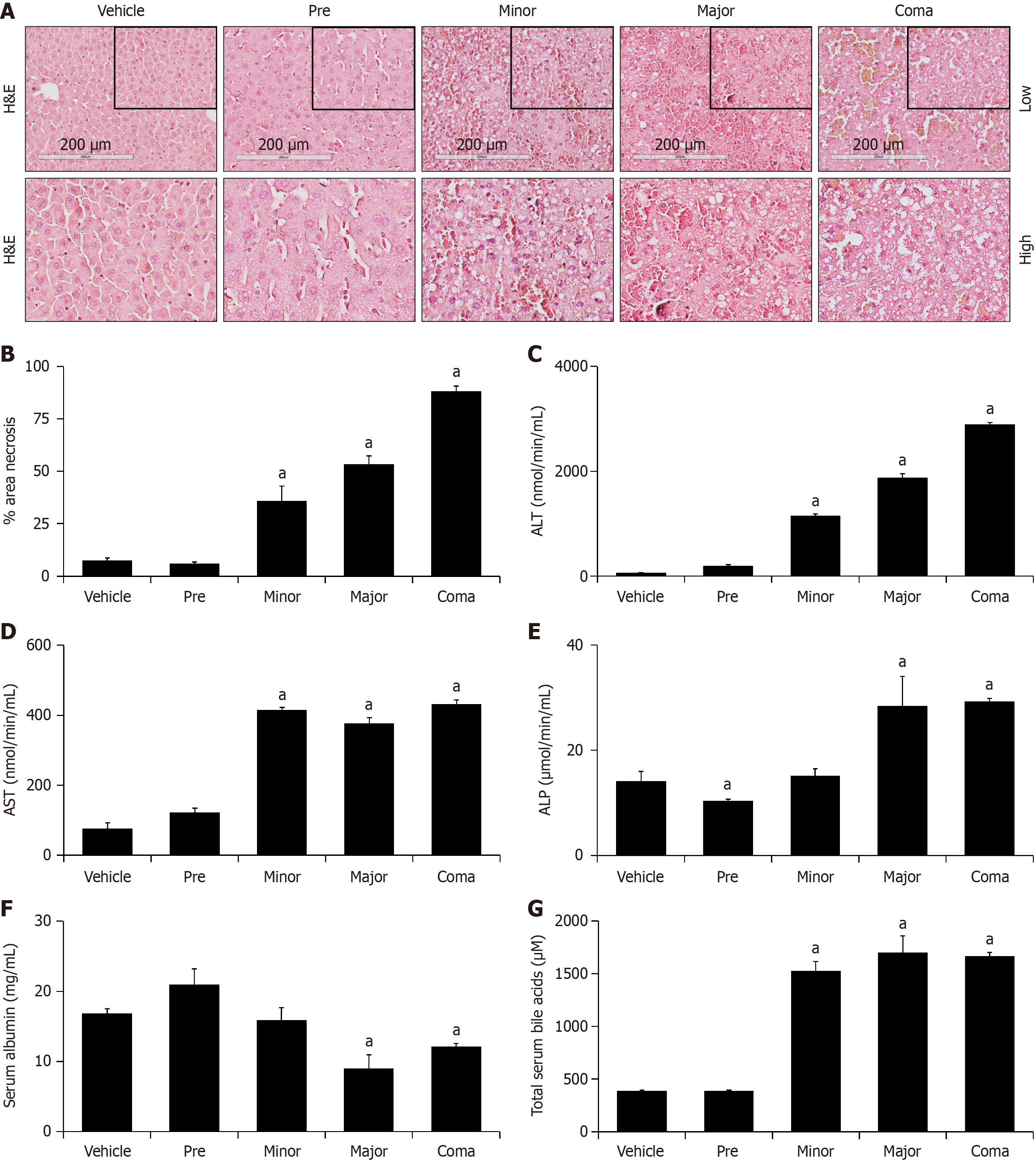Copyright
©The Author(s) 2025.
World J Gastroenterol. Mar 28, 2025; 31(12): 103952
Published online Mar 28, 2025. doi: 10.3748/wjg.v31.i12.103952
Published online Mar 28, 2025. doi: 10.3748/wjg.v31.i12.103952
Figure 1 Azoxymethane generates progressive liver necrosis and hepatic injury.
A: Representative hematoxylin & eosin (H&E)-stained images from vehicle- and azoxymethane (AOM)-treated livers at pre, minor, major and coma time points; B: Percent area of hepatic necrosis of H&E liver-stained sections from mice administered vehicle or AOM at pre, minor, major and coma time points; C and D: Serum alanine aminotransferase (ALT) and aspartate aminotransferase (AST) activity in vehicle or AOM-treated mice reported as nmol of ALT/AST activity per minute per ml of serum; E: Serum alkaline phosphatase (ALP) concentration in mice treated with vehicle or AOM shown as µmol of ALP activity per minute per mL of serum; F: Serum albumin concentration in mice treated with vehicle or AOM reported as mg of albumin per mL of serum; G: Concentration of total bile acids in serum from vehicle and AOM-treated mice at the pre, minor, major and coma time points. n ≥ 3 for each group for all analyses. aP < 0.05 compared to vehicle-treated mice; H&E: Hematoxylin & eosin; ALT: Alanine aminotransferase.
- Citation: Bhattarai SM, Jhawer A, Frampton G, Troyanovskaya E, DeMorrow S, McMillin M. Characterization of hepatic pathology during azoxymethane-induced acute liver failure. World J Gastroenterol 2025; 31(12): 103952
- URL: https://www.wjgnet.com/1007-9327/full/v31/i12/103952.htm
- DOI: https://dx.doi.org/10.3748/wjg.v31.i12.103952









